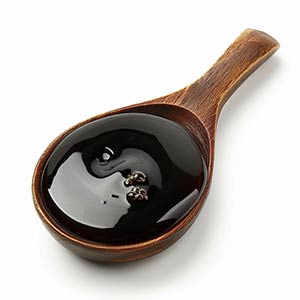Molasses is a rich, thick syrup derived as a byproduct during the refining of sugar cane or sugar beets into sugar. In perfumery, Molasses is utilized as a fragrance note to impart deep, sweet, and caramel-like nuances that add warmth and complexity to scent compositions. Historically, Molasses has been incorporated into gourmand fragrances, which are designed to evoke edible or dessert-like aromas. Its use in perfumes dates back to the late 20th century when perfumers began exploring more indulgent and comforting scent profiles. Molasses contributes a luxurious and viscous quality to fragrances, enhancing their longevity and providing a base that anchors lighter, more volatile notes. It is often blended with vanilla, amber, and various spices to create rich, enveloping scents that evoke feelings of warmth and indulgence.
Natural or Synthetic?
Molasses is primarily used in its synthetic form in perfumery because extracting a consistent and usable fragrance from the natural syrup is impractical. The natural molasses is a viscous, sticky substance with variable aromatic properties depending on its source and processing methods, making it unsuitable for standardized fragrance production. Synthetic Molasses-like compounds are developed to replicate the rich, sweet, and caramel-like aromas reliably and efficiently. These synthetic versions ensure consistency in scent profiles, ease of blending with other fragrance ingredients, and better stability within the perfume formulation. Additionally, the high viscosity and complex composition of natural molasses present challenges for integration into fragrance oils, further necessitating the use of synthetic alternatives.
Fragrance Families Molasses Most Commonly Found In
Show fragrances that contain Molasses as a note



